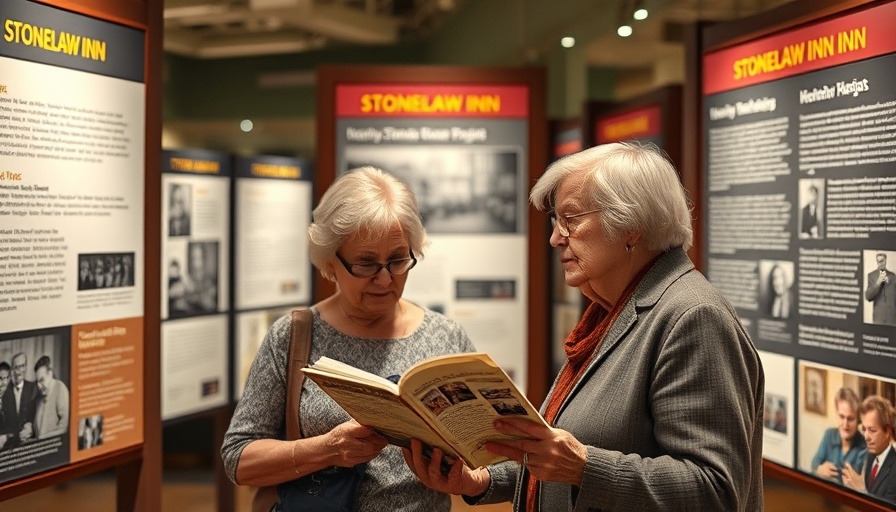
A Symbol of Resilience: The Stonewall Inn's Legacy
On June 28, 1969, the routine police raid on the Stonewall Inn ignited a series of protests that would redefine LGBTQ rights in America. This pivotal event, labeled as the catalyst for the modern-day gay rights movement, transformed a humble bar in New York City into a global symbol of resistance and resilience for the LGBTQ community. More than five decades later, the Stonewall Inn remains both a sanctuary for remembrance and a lively hub of activism, fun, and social gathering.
The National Designation and Its Significance
In 2016, President Barack Obama’s designation of the Stonewall site as a national monument solidified its historical importance. As both a National Historic Landmark and a symbol of LGBTQ rights, the Stonewall National Monument encompasses the inn, adjacent streets, and Christopher Park — a space adorned with rainbow flags and historical displays commemorating the resilience of the LGBTQ community. Visitors to this site experience more than just history; they engage in an emotional pilgrimage, paying homage to activists who fought tirelessly for equality.
A Place for Celebration and Mourning
The Stonewall Inn serves as a dual space of joy and sorrow. It has witnessed jubilant celebrations, such as crowds gathering to commemorate the Supreme Court's legalization of same-sex marriage, as well as solemn vigils mourning tragedies, including the Pulse nightclub shooting. The energies of both celebration and remembrance represent a continuous thread woven through the fabric of the LGBTQ community, indicative of their historical struggles and triumphs.
Exploring the Visitor Center Experience
Located across the street at 51 Christopher Street, the Stonewall National Monument Visitor Center is a modern tribute to this rich legacy. Spanning 2,100 square feet, the center invites visitors to immerse themselves in the narrative of the Stonewall riots and the broader LGBTQ rights movement. Interactive elements, such as a jukebox replica reminiscent of the original from 1969 and community story journals, personalize the visitor experience. Co-founders Diana Rodriguez and Ann Marie Gothard have ensured this center stands as a beacon of education, hope, and community engagement.
The Importance of LGBTQ History Education
The establishment of the Stonewall Visitor Center alongside the national monument addresses a profound need for LGBTQ history education. For a demographic that spans ages and backgrounds, understanding the events that catalyzed the LGBTQ rights movement fosters awareness and activism — essential for equality in the modern era. By targeting younger demographics, such initiatives promote a progressive understanding necessary for continued societal change.
A Call to Action: Engage with LGBTQ History
As the LGBTQ community continues its journey towards equality, neighboring LGBTQ spaces and organizations echo calls for ongoing support and engagement. Visiting locations like Stonewall not only provides a lesson in history, but it empowers current and future activists to advocate for social equity. Consider participating in events, sharing stories, or simply engaging in discussions about LGBTQ rights. Such involvement fuels community solidarity and is essential for ensuring that the spirit of Stonewall lives on.
The legacy of Stonewall is a reminder: while immense progress has been made, the fight for equality continues, and knowledge remains a powerful tool for advocacy. Join the journey towards understanding, and help honor those who paved the way for current freedoms.
 Add Row
Add Row  Add
Add 




 Add Row
Add Row  Add
Add 

Write A Comment